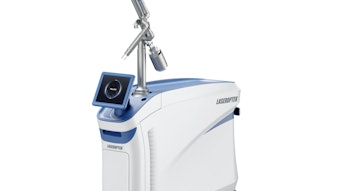
After medical training is complete and you transition into full-time patient care, research often falls by the wayside. But taking part in clinical studies while maintaining your practice can be immensely advantageous. It keeps you on the cutting edge of your specialty by exposing you to the latest tools and treatment options, allows you to further expand your career into publishing and speaking—both of which can increase your professional network—and helps prevent burnout. Plus, you are continually discerning the best ways to deliver care.
“[Staying active in research] reminds me to examine results and outcomes objectively, which ultimately makes me a better physician overall,” says Joely Kaufman-Janette, MD, a dermatologist at Skin Associates of South Florida in Coral Gables. “It also allows me to see and use new devices and medications before they come to the market, giving me clinical experience I could not get otherwise.”
Finding Your Focus
Before you get involved in clinical research, you must first examine your mentality and motivations. “You need to be curious and open-minded,” says Omar A. Ibrahimi, MD, PhD, founder and medical director of the Connecticut Skin Institute. “It is so important to conduct the research in as impartial and nonbiased a fashion as possible.”
Often, you’ll be inspired to conduct an investigation because of a question or hypothesis that comes up in your practice. Or, you may look at what other researchers or companies are doing and wonder if you can come up with a better approach. “Occasionally, I have a clinical problem without an obvious solution,” says Karol A. Gutowski, MD, a Chicago-based board-certified plastic surgeon who transitioned into doing research in private practice after being in academics for eight years. “So I begin to think, what would happen if I did something different? Then I look around to see what is available. If I think a product or device could have a new application, I approach the company or study it myself.”
Getting the Go-Ahead
Once you’ve formulated your question, you’ll need to develop a study design to objectively answer it—however, all research involving human subjects requires Institutional Review Board (IRB) approval. Studies must also be conducted in accordance with Good Clinical Practice (GCP) standards and U.S. Food & Drug Administration (FDA) regulations governing clinical trials. Because of these requirements, it’s a good idea to connect with companies and individuals who have experience and contacts. Large clinical research centers typically have their own IRBs, while practices that are just getting started can hire a commercial IRB to review their study protocol—or they can partner with a local institution that has its own IRB.
Girish “Gilly” Munavalli, MD, medical director and founder of Dermatology, Laser, and Vein Specialists of the Carolinas in Charlotte, North Carolina, recommends hiring a clinical trial coordinator if you plan to conduct research out of your practice. “A full-time clinical trial coordinator can help you with paperwork, organization, scheduling and communication, and sponsoring companies will know you’re serious about research,” he explains. “Part-time experienced coordinators are still a great option when first starting out, to minimize overhead.”
Dr. Kaufman-Janette also encourages anyone considering clinical research to take a course on the roles and responsibilities of a principal investigator. Online clinical research training on GCP and FDA regulations as well as principal investigator training courses are available through the National Institutes of Health Office of Clinical Research (https://ocr.od.nih.gov) as well as through several commercial companies. “Participating in clinical trials in your scope of practice is extremely rewarding, but you are accountable for what occurs in the study, not only during the trial, but for years after the study finishes,” says Dr. Kaufman-Janette. “At our center, we have a full staff solely dedicated to overseeing the safety of all the trials and ethical treatment of the subjects. For smaller trials, you may be able to use your current clinical staff to help, provided they are trained on how to conduct clinical trials and on the responsibilities of doing so.”
Securing the Funding
There are three main ways to fund clinical research: self-funding, industry funding and non-industry funding, which may include patient advocacy organizations, professional associations or government grants. “You can obtain research funding from many organizations, such as the National Institutes of Health, the American Academy of Dermatology, the American Society for Dermatologic Surgery and the American Society for Lasers in Surgery and Medicine, as well as seek sponsorship from industry or other organizations,” says Dr. Ibrahimi.
Industry funding, while the most common, may come with strings attached. For instance, the sponsoring company may want to determine the protocol used for the study—or, if they don’t like your findings, they may not want you to publish the results, says Dr. Gutowski.
“There are inherent conflicts of interest, whether perceived or real, when industry is funding the study,” adds Dr. Munavalli. “These funding sources may also have contractual control over the study results with regards to presentation and publication.” However, he adds: “The pros of working with industry are the ability to fund the trial to completion and experience the gratification of designing and running a successful trial.”
Generally, self-funding and funding from an organization, such as the National Rosacea Society or the American Skin Association, will allow you to perform the most independent research. “If you go to a professional organization, you typically go through a formal grant review process, which may give you feedback on how to improve the study, but usually they let you do what you want with the data and will permit you to publish it,” says Dr. Gutowski. “If you are funding the research with your own money, you have no restrictions.”
Publishing Your Work
Once your study is complete, you can publish it, present it at a scientific meeting, or do both. “You must collate all the data and put together a story about why the research is relevant and what methods you used, and include a discussion of the results and limitations of your study,” says Dr. Ibrahimi, who has published more than 60 articles in his career.
Medical journals have their own guidelines for how to structure your manuscript, and this information is readily available on their websites. Some journals are very competitive with only the best research making it to print. Others are easier for new researchers—but beware of the predatory journals that allow anyone to publish for a fee, warns Dr. Gutowski. Reputable journals do not charge for publication. Meanwhile, if you want to present your data and outcomes at a scientific meeting, visit the association’s website for deadlines and application guidelines.
Considering the Caveats
While conducting your own research is rewarding, Dr. Munavalli cautions that it can be extremely time-consuming, especially if the study requires numerous visits and you’re trying to run a practice with a heavy patient load. “Be prepared to sacrifice some of that load to focus on doing quality trial work,” he says. “It can definitely be worth it.”
Indeed, the more research you do, the more opportunities will present themselves. “By taking part in research, you develop relationships with other researchers. That can go a long way in obtaining future projects,” says Dr. Gutowski.
Ultimately, while the financial rewards may not be immediately apparent, there are plenty of pluses. “I make more money when I see patients, but [conducting research] helps me stay ahead of the curve and evaluate tomorrow’s treatments today,” says Dr. Ibrahimi.
Daniel Casciato is a freelance writer based in South Bend, Indiana.
Image copyright Getty Images











